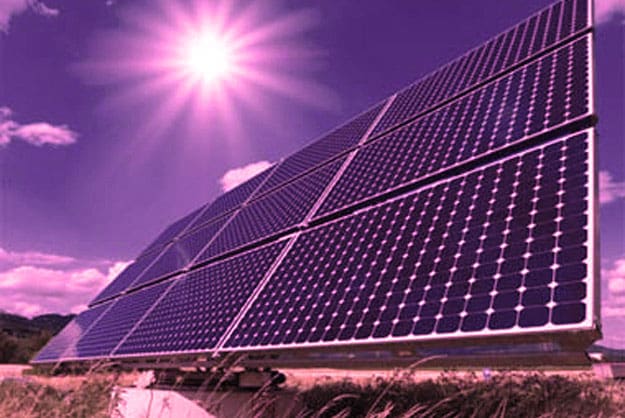In situations where networks are fairly simple and fault levels are low. For example in most embedded utility scale Solar (PV). Earthing/grounding can have a significant impact on the cost to build (and connect) a successful renewable generation scheme. A key part of the build cost is down to the raw materials, of which a significant part is the cost of copper. Used for the control of surface voltages as part of a Safe Electrical Earthing Design.
So, a quick and easy win for reducing the overall cost is to lower the raw material costs.
How can we do that?
Using Innovative Electrical Earthing Design
Very simply, we carefully consider replacing the copper earth conductor with galvanised steel. While thicker section material is required to give the same ampacity as copper. The much reduced cost of steel means that there is still scope for significant savings.
Furthermore, the steel fixings can be much more robust than the gunmetal components. Used for copper-based earthing systems. So there’s less wastage on-site.
Additionally, the steel fixings are less than a tenth the price of the comparable gunmetal components.

Suitability Considerations
The use of alternative materials is not a one-size-fits-all solution. Each Solar renewable electrical Earthing design needs to be assessed for its suitability on a case-by-case basis.
There are other considerations to take into account. But for the most part, on the small-scale Solar type projects there is clearly scope for measurable costs savings.
Additionally, where the soil resistivity ground structure has a particularly low resistivity, one can also avoid galvanic cell corrosion concerns as well.
Take a minute to read a recent case study on “Innovative approach to Stray-Current Corrosion for Solar Renewable Earthing Design” using galvanised steel Earthing System for a utility scale PV project in the UK. Providing the client with significant savings. And without affecting their build programme.
If your Earthing system design problems for Solar (or other renewables) need attention using some new GreyMatter, get in touch, we’re here to help!
[wptab name=’Author ‘]
Hugh is a Research Engineer at GreyMatters, joining in 2014. He graduated from the University of Bath, sponsored by the IET’s Power Academy scheme. Hugh has a strong technical background with National Grid working on T&D schemes at voltages from 132 kV to 400 kV. Outside of work, you can find him cycling and fly fishing, or backstage at various local amateur dramatic companies.
[/wptab]
[wptab name=’Latest Posts’]
Recent Posts by Hugh
When Earthing Science Actually Works
Electrical Earthing System Design Separation
[/wptab]
[end_wptabset]










